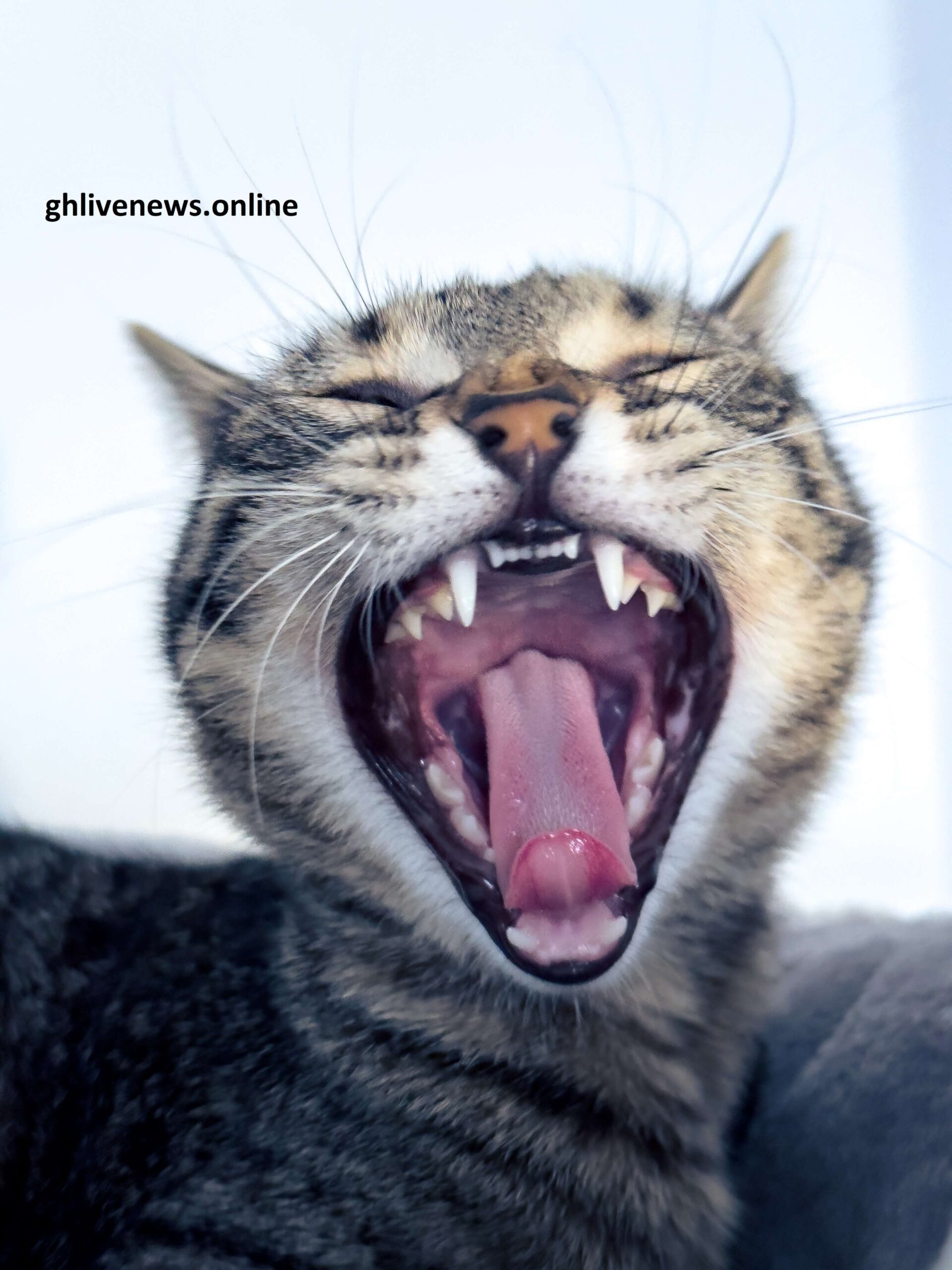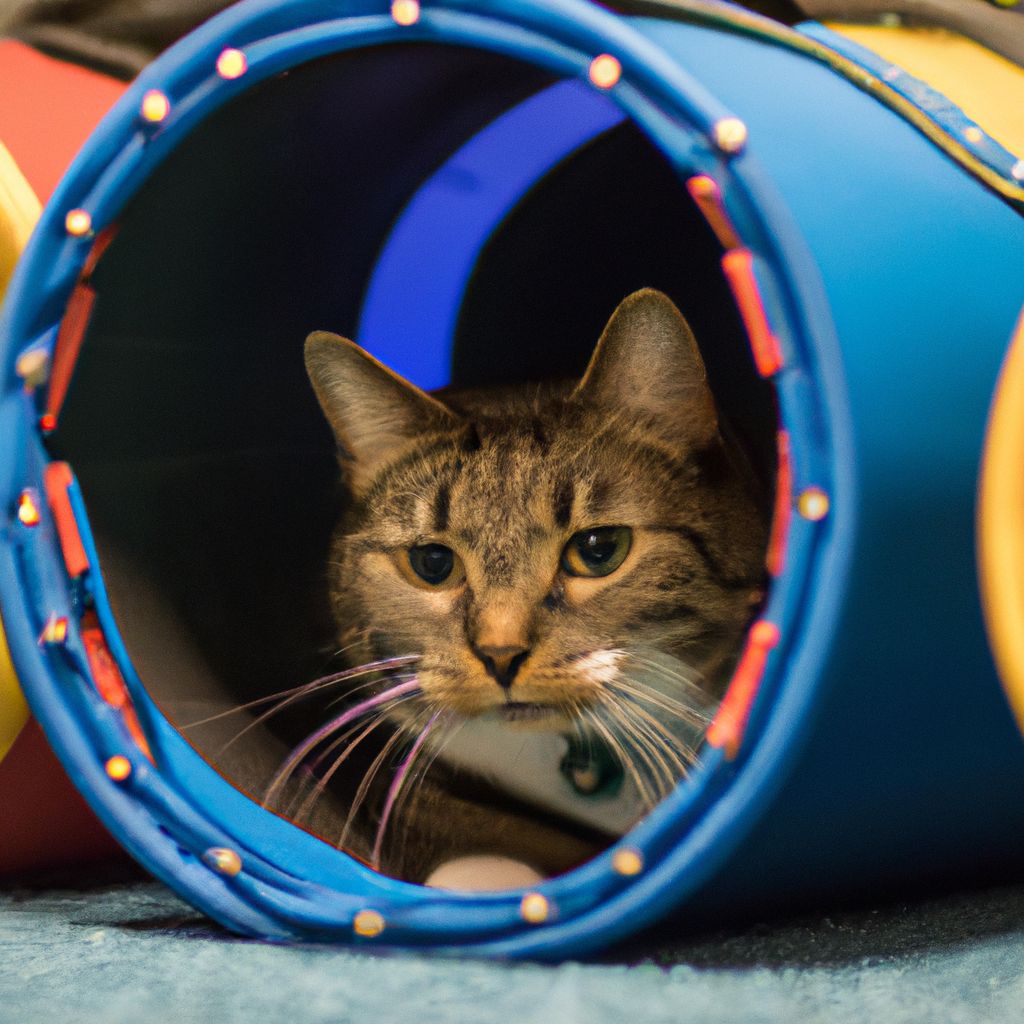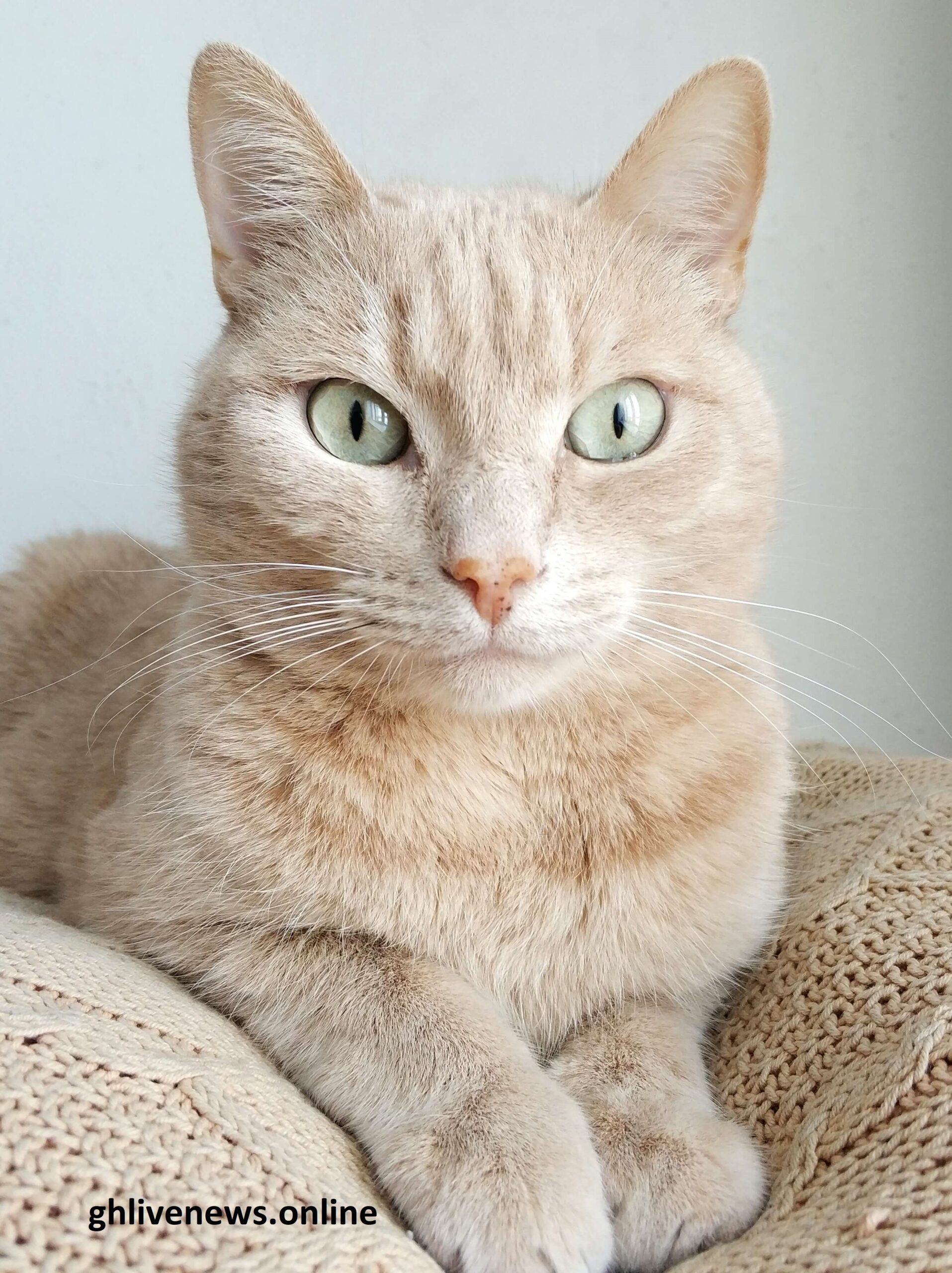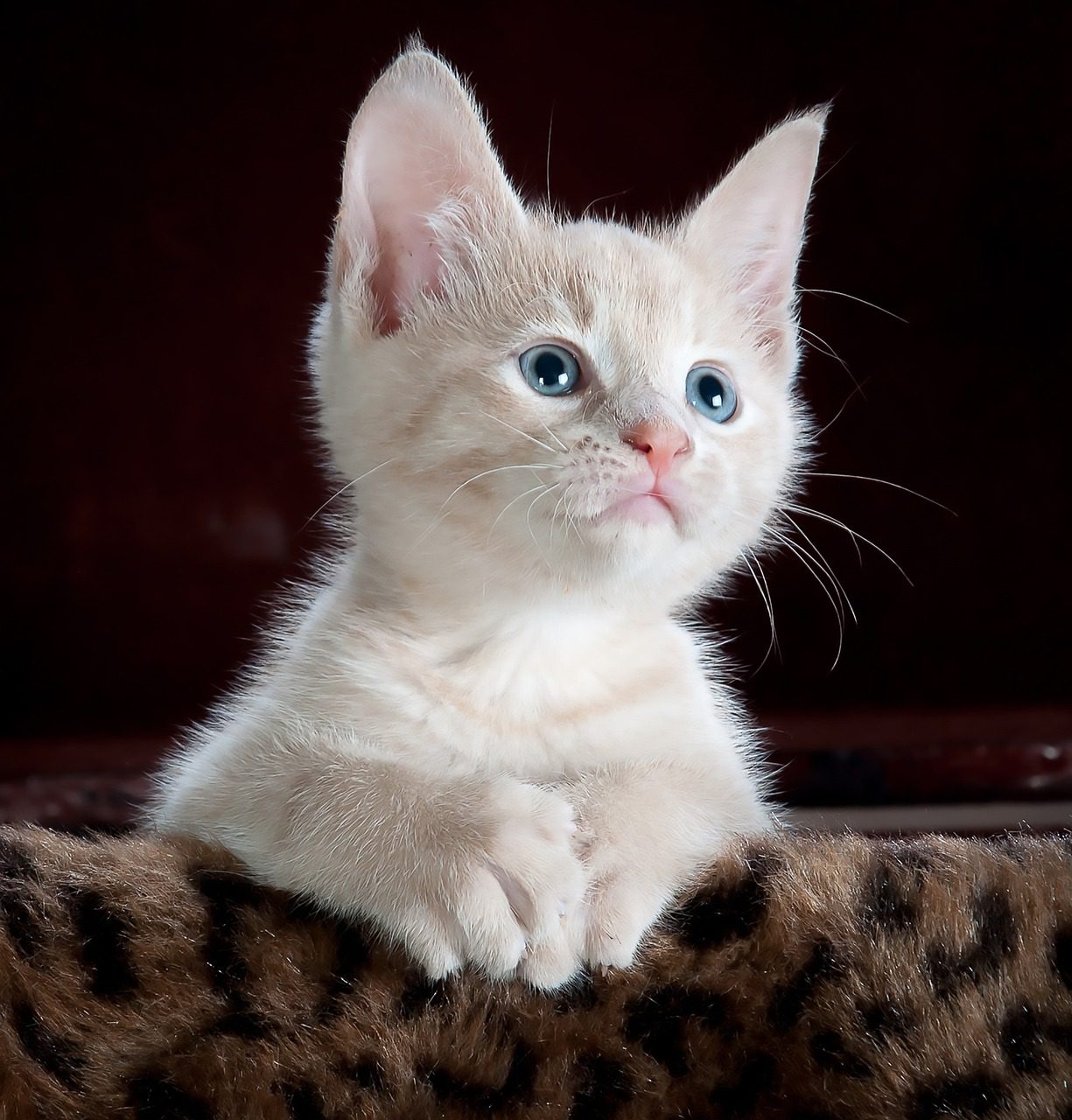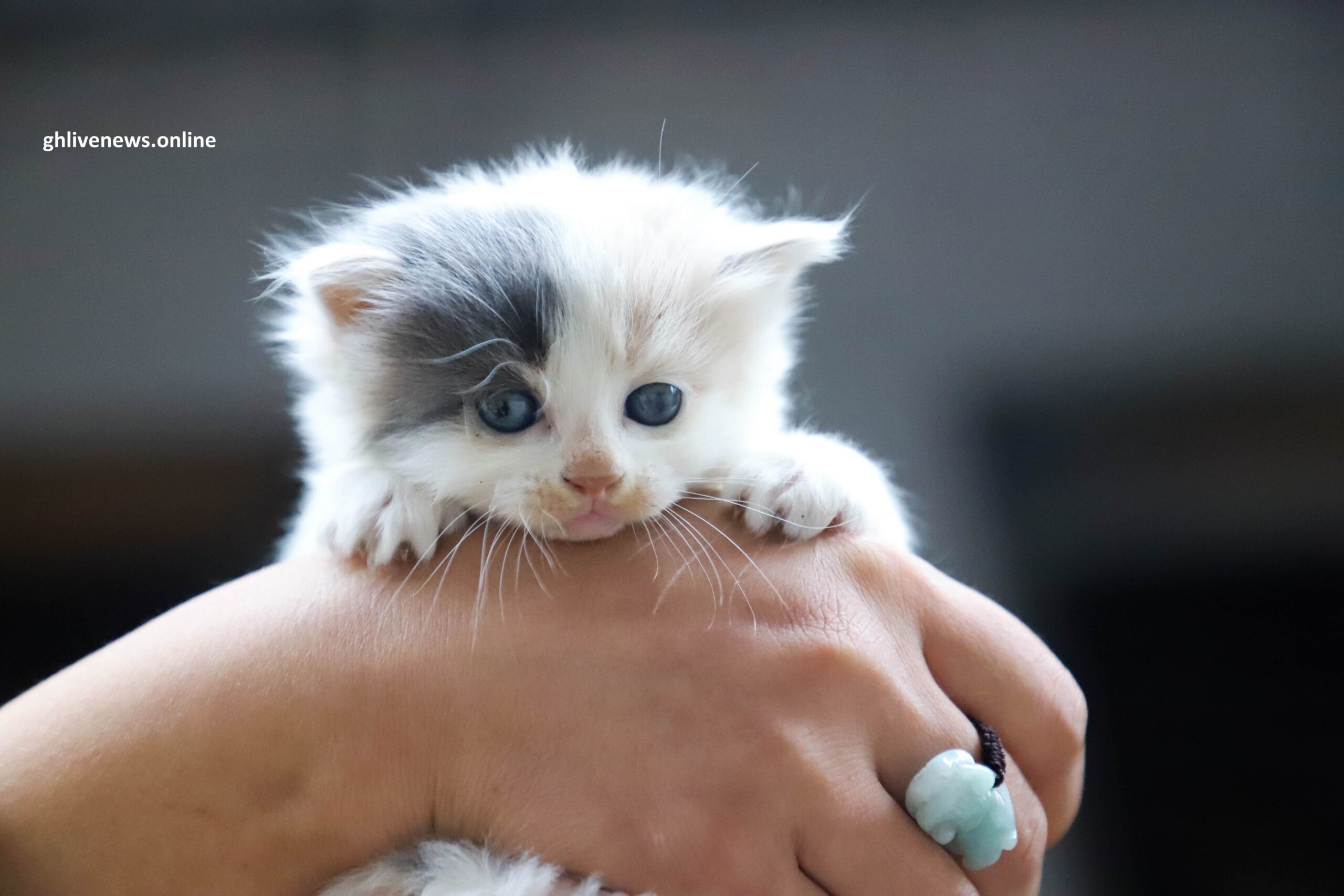Key takeaway:
- Decoding cat body language is crucial: Understanding your cat’s body language can help you communicate effectively and build a stronger bond with your feline companion. By paying attention to their posture, tail movements, and ear expressions, you can interpret their mood and intentions.
- Vocalizations provide important clues: Cats use various types of meows and other vocalizations to communicate their needs and emotions. By learning the meanings behind different meows and paying attention to other vocal cues, you can better understand what your cat is trying to tell you.
- Facial expressions and eye contact matter: Reading your cat’s facial expressions and understanding their eye contact can reveal a lot about their emotions and level of comfort. By being observant and responsive to your cat’s facial cues, you can create a deeper understanding and strengthen your relationship.
Introduction: Understanding Cat Behavior: Body Language and Communication
Understanding Cat Behavior: Body Language and Communication is a vital aspect of comprehending feline behavior patterns. By observing a cat’s body language and communication signals, we can gain insights into their feelings, needs, and intentions. This understanding allows for effective communication and enhances the bond between humans and cats.
Recognizing the nuances of a cat’s body language, such as tail position, ear posture, and facial expressions, enables us to interpret their emotions accurately. Moreover, decoding their vocalizations and non-verbal cues helps us comprehend their intentions and desires. This knowledge is essential for providing appropriate care and creating a harmonious environment for our feline companions. Additionally, learning about the different behaviors and communication styles of cats enables us to respond to their needs effectively.
For instance, when a cat purrs, it signifies contentment, whereas a swishing tail might indicate agitation or fear. As a responsible pet owner, gaining a deep understanding of cat behavior is crucial for providing the best possible care and nurturing a strong and loving relationship with our feline friends.
One unique aspect of cat behavior is the “slow blink” or “cat kiss.” When a cat looks at you and blinks slowly, it is a sign of trust and affection. The slow blink is equivalent to a friendly greeting and can be reciprocated by returning the blink, establishing a bond of trust and affection between human and cat.
This knowledge comes from the article “Understanding Cat Behavior: Body Language and Communication,” which provides valuable insights into deciphering cat behavior through their body language and communication signals. By understanding these cues, we can enhance our understanding of cats and strengthen our connection with them.
In summary, understanding cat behavior and their body language and communication signals is crucial for effective and harmonious interaction with our feline companions. By interpreting their cues accurately, we can provide them with optimal care and nurture a strong and loving bond.
The Importance of Decoding Cat Body Language
When it comes to understanding our feline friends, decoding their body language plays a crucial role. Context, in particular, is a key factor in unraveling the enigmatic behaviors exhibited by cats. By grasping the significance of context in decoding cat behavior, we can unlock valuable insights into their emotions, intentions, and needs. Throughout this discussion, we will delve into the various aspects of context that influence cat body language, shedding light on the intricate world of feline communication.
Context: A Key Factor in Decoding Cat Behavior
Understanding the context is crucial in deciphering feline behavior. By analyzing the circumstances surrounding a cat’s actions, we can gain valuable insights into their motives and emotions. Context, as a key factor in decoding cat behavior, helps us understand why a cat may display certain body language cues or vocalizations. It allows us to interpret their actions more accurately and respond appropriately to their needs and desires. By considering the context, we can enhance our understanding of cats and strengthen our bond with them.
The context in which a cat’s behavior occurs provides essential information for interpretation. For example, observing a cat’s posture and stance can reveal whether they are feeling relaxed or defensive. Understanding their tail position and movements can indicate whether they are content or agitated. Similarly, paying attention to ear posture and expressions can give insights into their level of alertness or fear. These elements of body language make up an important part of understanding cat behavior.
However, it is not enough to solely rely on body language cues. Vocalizations also play a significant role in communication between cats and humans. Different types of meows have various meanings that can convey hunger, discomfort, or even affection. Other vocalizations like hissing or growling indicate aggression or fear. By learning to recognize these sounds and associate them with specific emotions or needs, we can better understand our cats’ intentions.
Another aspect of decoding cat behavior lies in reading their facial expressions and eye contact. A curled lip or dilated pupils can signify displeasure or anxiety while a relaxed face indicates contentment. Maintaining eye contact with a cat can communicate trust, whereas prolonged stares may be perceived as threatening behavior by the feline.
A true fact: According to the article “Understanding Cat Behavior: Body Language and Communication,” understanding a cat’s body language is essential for establishing effective communication with them.
Cats communicate through their body language, so make sure you brush up on your feline interpretative dance moves.
Key Elements of Cat Body Language
Understanding the intricate world of cat behavior can be both fascinating and rewarding. In this section, we’ll explore the key elements of cat body language and how they contribute to their communication. Cat behavior experts have identified several crucial aspects to observe: posture and stance, tail position and movements, and ear posture and expressions. By deciphering these subtle cues, we can gain valuable insights into a cat’s mood, intentions, and overall well-being. So let’s dive into the world of feline body language and unlock the secrets that our furry friends are trying to convey.
Posture and Stance
Cats communicate through various forms of body language, including their posture and stance. The way a cat holds itself can convey important information about its mood and intentions. For example, an upright and confident posture indicates that the cat is feeling calm and secure, while a crouched or hunched posture may signal fear or aggression. Paying attention to a cat’s body language can help us understand their needs and emotions better.
Each aspect of a cat’s posture and stance has significance. For instance, the position and movement of the tail can provide valuable insights into a cat’s state of mind. A raised tail with a slight curve at the top often indicates friendliness, while a puffed-up or thrashing tail may suggest agitation or arousal. Similarly, the position and expressions of the ears are essential indicators of a cat’s emotional state. Ears held forward show attentiveness or curiosity, while flattened ears suggest fear or aggression.
In addition to these common cues, there are other unique details to observe in a cat’s posture and stance that can deepen our understanding of their behavior. For example, subtle changes in the angle at which they hold their bodies or how they distribute their weight can indicate whether they are relaxed or ready to pounce. By paying close attention to these nuances, we can gain valuable insights into our feline companions’ feelings.
A true story illustrates the importance of recognizing postures and stances in cats’ behavior. John noticed that his usually friendly cat, Whiskers, was exhibiting a stiffened body posture with an arched back whenever he approached her food bowl during mealtime. Recognizing this defensive stance as a sign of resource guarding, John took steps to address Whiskers’ concern by providing her with more space during meals and introducing positive reinforcement techniques. As Whiskers began to feel less threatened, her defensive stance gradually disappeared, leading to improved mealtime behavior.
By understanding the significance of a cat’s posture and stance, we can enhance our ability to communicate and bond with them effectively. Being aware of these non-verbal cues allows us to respond appropriately to their needs and emotions, ultimately strengthening the human-feline relationship.
If a cat’s tail is twitching like it’s contemplating world domination, it’s probably just thinking about snacks.
Tail Position and Movements
Here is a breakdown of the various tail positions and movements along with their meanings:
| Column 1: Tail Position | Column 2: Tail Movements | Column 3: Meaning |
|---|---|---|
| 1) Upright or Raised | Straight, bristled hair | Alertness, confidence, aggression |
| 2) Tucked or Between Hind Legs | Low, fast swishing back and forth | Fear, anxiety, submission |
| 3) Curved or Hooked Shape | Slow wagging from side to side | Playfulness, excitement |
| And many more… |
Additionally:
- Rapid twitching can indicate annoyance or irritation.
- Lashing tail can signal aggression or agitation.
It’s important to note that tail positions alone do not provide a comprehensive understanding of a cat’s behavior. We should consider other body language cues such as posture, ear position, vocalizations, and facial expressions for a complete assessment.
A true fact: A study conducted by Dr. Sharon Crowell-Davis at the University of Georgia found that cats use specific tail movements to communicate with their owners.
Listen up hoomans, your cat’s ears aren’t just for looking adorable, they’re also telling you their mood!
Ear Posture and Expressions
Text:
- Raised Ears: Indicate attentiveness or curiosity.
- Relaxed Ears: Signify contentment or relaxation.
- Flattened Ears: Suggest fear or aggression.
- Twitching Ears: Show alertness or irritation.
- Backward Ears: Point towards fear or submission.
Understanding these ear postures and expressions can provide valuable insights into a cat’s emotional state and help establish effective communication.
In addition to body language, cats also utilize vocalizations to convey their needs and emotions. By paying attention to the different types of meows and other vocalizations, such as purring, hissing, or growling, cat owners can better understand their fur companions’ desires and concerns.
Facial expressions and eye contact also play a significant role in cat communication. Reading your cat’s facial expressions, such as relaxed eyes indicating contentment or dilated pupils suggesting fear or aggression, helps in interpreting their mental state accurately.
By having knowledge about common cat behaviors like licking/grooming, purring/kneading, hissing/growling, owners can gain further insight into their cats’ feelings and respond accordingly.
To strengthen the human-feline bond through understanding, it is essential to build trust with your cat by offering positive reinforcement for desired behaviors while setting clear boundaries. This open channel of communication fosters a harmonious relationship between humans and their feline friends.
True History:
Throughout history, cats have developed intricate ways of communicating with humans through their ear posture and expressions. Their ability to convey emotions effectively has been honed over centuries of domestication. Recognizing these subtle cues not only allows us to form deeper connections with our furry companions but also ensures their well-being.
Meow means ‘feed me,’ unless it means ‘pet me,’ or ‘I’m bored,’ or ‘open the door,’ or ‘leave me alone,’ or…
Vocalizations: What Your Cat’s Meows Really Mean
When it comes to understanding our feline companions, there’s no denying that their vocalizations play a vital role in communication. The sub-sections ahead will shed light on the mysteries behind your cat’s meows and other vocalizations. Dive into the world of cat language as we explore the different types of meows and uncover their underlying meanings.
Additionally, we’ll discuss other intriguing vocalizations to keep an ear out for, giving you a comprehensive understanding of how your cat expresses their needs and emotions.
Different Types of Meows and Their Meanings
– Some meows indicate a desire for attention or affection, often accompanied by purring.
– Other meows may be a call for food or water, expressing hunger or thirst.
– Cats may also use specific meows to communicate feelings of discomfort or pain, signaling a need for help.
– A low-pitched, drawn-out meow can indicate frustration or annoyance, while a high-pitched, short meow may convey excitement or playfulness.
– Excessive meowing can sometimes signify stress, anxiety, or illness and should be assessed accordingly.
– Each cat may have its own unique vocal repertoire and nuances. Understanding these individual differences can deepen the human-feline bond.
It’s important to note that cats communicate through a combination of body language, vocalizations, and facial expressions. By considering these various elements together, cat owners can gain a more comprehensive understanding of their pet’s needs and emotions.
Pro Tip: Paying attention to the frequency, tone, and context of your cat’s meows can help you decipher their meaning more accurately. Additionally, observing other accompanying behaviors can provide valuable clues to understand different types of meows and their meanings even better.
Listen closely, because your cat’s vocalizations are like a secret language, and understanding them could save you from a vicious hairball attack.
Other Vocalizations to Look Out For
Other Audible Expressions to Observe
- Chirping or Trilling: These vocalizations are often a sign of excitement or anticipation, commonly heard when a cat spots prey.
- Yowling or Howling: These intense vocalizations can indicate distress, pain, or mating behavior in cats. Understanding the context is crucial.
- Grunting or Grumbling: This low-pitched sound usually signifies annoyance or dissatisfaction in cats and may precede aggressive behavior.
- Caterwauling: This loud wailing sound is typically associated with female cats in heat, as they try to attract male suitors.
- Whispering Meows: Some cats may make soft, barely audible meows as a form of communication. Pay attention to their body language for clues.
While we have already explored various types of vocalizations that cats use to communicate, it’s important to note that each cat may have its unique set of sounds and variations within these categories.
To truly comprehend and respond effectively to your feline companion’s vocalizations, it’s vital to be attentive and observant. By familiarizing yourself with the nuances and subtleties of your cat’s vocal repertoire, you can better understand their needs and provide an appropriate response.
Don’t miss out on this opportunity to deepen your bond with your cat by deciphering their other audible expressions! Pay attention, listen closely, and establish a stronger connection with your furry friend.
Reading your cat’s facial expressions is like deciphering an ancient hieroglyphic code, but with more whiskers and less treasure.
Understanding Facial Expressions and Eye Contact
When it comes to understanding our feline companions, decoding their body language and communication cues can provide invaluable insights into their thoughts and emotions. In this section, we will dive into the intriguing world of facial expressions and eye contact in cats.
By deciphering your cat’s facial expressions, you can gain a better understanding of their current mood and intentions. Additionally, we will explore the fascinating language of eye contact in cats, delving into how their gaze can convey various messages.
So, let’s uncover the secrets behind these non-verbal forms of cat communication and deepen our bond with our feline friends.
Reading Your Cat’s Facial Expressions
Cats communicate through various forms of body language, including their facial expressions. Understanding your cat’s facial expressions can provide valuable insight into their emotions and intentions. By observing the positioning of their ears, the shape of their eyes, and the movement of their whiskers, you can gain a deeper understanding of what your cat is trying to convey. Paying attention to these subtle cues can help you recognize when your cat is feeling content, anxious, fearful, or even aggressive. By reading your cat’s facial expressions, you can enhance your ability to communicate effectively with them and strengthen your bond.
Observing your cat’s facial expressions provides important clues about how they are feeling in different situations. Cats use their eyes to express various emotions, such as happiness, relaxation, or even fear. Dilated pupils can indicate excitement or curiosity, while narrowed pupils may signal aggression or fearfulness. The position and shape of the ears also play a significant role in understanding your cat’s emotional state. Erect ears signify alertness or interest, backward-swept ears may indicate anxiety or aggression, and flattened ears often reflect fear or submission. Additionally, paying attention to fine changes in your cat’s facial muscles or mouth movements can give you further insight into their mood and intentions.
Additionally, a cat’s eyes can speak volumes, just remember not to answer back.
The Language of Eye Contact in Cats
Eye contact plays a crucial role in feline communication, with cats using it as a form of expression and interaction. Cats’ eye contact serves as an important part of their body language, allowing them to convey emotions and intentions to both humans and other animals. It is essential for cat owners to understand the language of eye contact in cats in order to establish a strong bond and ensure effective communication.
When observing a cat’s eye contact, certain cues can provide insight into their emotions and intentions. Dilated pupils often indicate excitement or fear, while constricted pupils may suggest aggression or discomfort. Direct eye contact from a relaxed cat is a sign of trust and contentment, while prolonged staring can be seen as a challenge or threat. Blinking slowly at your cat is considered a friendly gesture that shows them you are not a threat.
In addition to understanding eye contact cues, it is important to consider other aspects of a cat’s body language to interpret their overall message accurately. The position of their ears, tail movements, and vocalizations all contribute to the context in which their eye contact should be understood.
According to Animal Behaviorist John Bradshaw (2018), maintaining appropriate eye contact with your cat helps foster trust and strengthen the human-feline bond.
From grooming to growling, deciphering your cat’s behavior is like solving a furry riddle with no clues—just sharp claws.
Common Cat Behaviors and Their Interpretations
When it comes to understanding our feline friends, decoding their behaviors holds the key. In this section, we’ll explore some of the most common cat behaviors and the meanings behind them.
From the soothing act of licking and grooming to the comforting vibrations of purring and kneading, each behavior tells a story about their emotions and intentions. We’ll also unravel the mysteries behind hissing and growling, which serve as cats’ warning signs or defensive expressions. By recognizing these behaviors, we can establish better communication with our furry companions.
Licking and Grooming
Cats express their affection and maintain hygiene through their natural behavior of grooming and cleaning themselves, using their tongues to lick their fur. This grooming process serves multiple purposes, including removing dirt and debris from the coat, distributing natural oils, and stimulating blood circulation. Additionally, licking also enables cats to bond with one another by engaging in social grooming. As part of this behavior, cats will often groom other felines in their social group as a sign of companionship and trust.
In addition to self-grooming, cats may also engage in grooming behaviors towards their human caregivers. This can be seen as a gesture of affection and trust, as well as an opportunity for bonding. Some cats may even take on a caretaker role by grooming their owners, treating them like fellow members of their social group.
Furthermore, licking and grooming can also serve as a form of stress relief for cats. During times of anxiety or discomfort, such as when encountering unfamiliar situations or undergoing changes in their environment, cats may engage in excessive self-grooming as a means to cope with stress.
Understanding the significance of licking and grooming behaviors allows cat owners to better interpret the needs and emotions of their feline companions. By recognizing these behaviors as both signs of self-care and expressions of love, cat owners can strengthen the bond between themselves and their beloved pets.
Don’t miss out on the opportunity to connect with your cat on a deeper level through understanding its unique behaviors and communication methods. By observing your cat’s licking and grooming habits, you can gain valuable insights into its physical well-being, emotional state, and social interactions within its environment. Take the time to learn more about your cat’s body language and communication signals to enhance your relationship with your furry friend.
Purring and kneading: your cat’s way of saying ‘I love you,’ or ‘I’m plotting something sinister, but you’ll never know.’
Purring and Kneading
Text:
– Purring: Cats purr to communicate contentment, relaxation, and as a self-soothing mechanism. It can also indicate a need for attention or a desire for social interaction.
– Kneading: When cats knead with their paws, it’s reminiscent of their behavior as kittens during nursing. This action signifies comfort, bonding, and marking territory through scent glands in their paws.
These unique behaviors are deeply ingrained in a cat’s nature and serve various purposes in their communication repertoire.
Pro Tip: When your cat is purring or kneading, take the opportunity to bond with them through gentle strokes and affectionate gestures.
When your cat hisses and growls, it’s like a warning sign on a haunted house, except the house is your cat and it’s just really cranky.
Hissing and Growling
Hissing and growling can be innate defensive behaviors displayed by cats. These vocalizations serve as warning signals to communicate fear, discomfort, or aggression. Understanding the meaning behind hissing and growling is crucial in interpreting a cat’s emotional state and responding appropriately.
These distinct sounds emitted by cats indicate their level of stress or threat perception. When a cat hisses, it is usually a reaction to feeling threatened or cornered. It is an instinctive way for them to warn potential aggressors to stay away. On the other hand, growling typically occurs when a cat feels territorial or challenged by something or someone.
It’s important to note that not all instances of hissing and growling should be seen as aggressive behavior. Some cats may hiss or growl during playtime or while interacting with unfamiliar people or animals. This could be their way of setting boundaries and expressing discomfort.
To better understand the context behind hissing and growling, pay attention to the accompanying body language of the cat. Signs such as flattened ears, dilated pupils, arched back, raised fur, or tail lashing can provide insight into their emotional state.
If your cat exhibits frequent hissing and growling without any apparent reason, it is advisable to consult with a veterinarian or an animal behaviorist. They can help identify any underlying medical conditions or behavioral issues contributing to this behavior.
By recognizing the significance of hissing and growling in cat communication, you can respond appropriately and ensure the well-being of your feline companion. Provide them with a safe environment where they feel secure, establish clear boundaries through positive reinforcement training, and maintain regular veterinary care for a happy and harmonious relationship with your cat.
Unlock the secrets of feline communication and become a fluent cat whisperer with these purr-fect tips and techniques.
Communicating with your Cat: Tips and Techniques
When it comes to communicating with our feline companions, building trust and establishing a strong bond is key. This is the focus of the first part of this section. Understanding how to connect with your cat on a deeper level will not only enhance your relationship, but also contribute to their overall well-being.
The second part will explore the importance of communicating boundaries and reinforcing positive behavior. By setting clear limits and encouraging desired actions, we can create a harmonious and mutually respectful environment for both ourselves and our cats.
Building Trust and Establishing Bond
The process of developing trust and fostering a strong connection between a human and their feline companion is crucial in strengthening the human-feline bond. By understanding cat behavior, body language, and communication cues, individuals can establish and build trust with their cats. This involves recognizing and respecting the cat’s boundaries, creating a safe environment, and consistently reinforcing positive behaviors. By doing so, individuals can ensure a harmonious and fulfilling relationship with their beloved feline friends.
Letting your cat know where the line is drawn is like setting up their GPS for good behavior.
Communicating Boundaries and Reinforcing Positive Behavior
Boundaries play a crucial role in establishing positive behavior patterns for cats. By communicating and reinforcing these boundaries, cat owners can create a harmonious environment for their furry friends. It is important to set clear expectations and consistently reinforce positive behaviors through training and rewards. This helps cats understand what is acceptable and encourages them to engage in desired behaviors. Additionally, providing a safe space and respecting a cat’s personal boundaries can contribute to their overall well-being.
One key aspect of communicating boundaries is setting limits on certain behaviors, such as scratching furniture or jumping onto countertops. This can be done by redirecting the cat’s attention to appropriate scratching posts or providing alternative jumping spots, along with using positive reinforcement techniques like treats or praise when they engage in desired behaviors.
Moreover, it is vital to establish consistent rules and routines for feeding, playtime, and sleeping areas to reinforce positive behavior patterns. By creating a predictable environment for cats, they are more likely to feel secure and exhibit desirable behaviors.
Additionally, understanding a cat’s body language and vocalizations can inform how boundaries are communicated effectively. For instance, if a cat exhibits signs of discomfort or aggression through growling or hissing when interacting with humans or other animals, it is crucial to respect their boundaries and give them space.
True fact: Studies have shown that cats are highly responsive to human gestures and cues when it comes to learning new tasks. (source: “Understanding Cat Behavior: Body Language and Communication”)
Conclusion: Strengthening the Human- Feline Bond through Understanding
Understanding Cat Behavior: Strengthening the Human-Feline Bond
The bond between humans and felines can be significantly enhanced through a deep understanding of cat behavior. By interpreting their body language and communication, we can establish a strong connection with our feline companions. This understanding allows us to cater to their specific needs and provide them with the care and attention they require.
Cats have a unique way of expressing themselves through their body language. By observing their tail position, ear movement, and overall demeanor, we can decipher their emotions and intentions. This knowledge helps us anticipate their needs and respond accordingly, fostering a deeper bond based on trust and mutual understanding.
Communication is another crucial aspect of strengthening the human-feline bond. Cats use a variety of vocalization and non-verbal cues to convey their desires and emotions. By recognizing these cues, such as meowing, purring, or rubbing against us, we can effectively communicate and meet their needs. This reciprocal understanding creates a sense of companionship and strengthens the bond between humans and cats.
In addition to body language and communication, understanding cat behavior includes providing them with a stimulating environment that meets their instinctual needs. This involves offering appropriate toys, scratching posts, and climbing structures to satisfy their natural predatory and territorial instincts. By ensuring their physical and mental well-being, we can establish a harmonious and fulfilling relationship with our feline friends.
A true story that exemplifies the importance of understanding cat behavior involves a woman who adopted a rescue cat with a history of fear and aggression. Through patient observation and learning about feline behavior, she was able to identify triggers that caused the cat’s negative reactions. By creating a safe and comfortable environment and using positive reinforcement techniques, she gradually helped the cat overcome its fear and aggression, ultimately establishing a strong and loving bond.
Conclusion:
By delving into the intricacies of cat behavior and communication, we can strengthen the human-feline bond. Understanding their body language, interpreting their vocalizations, and fulfilling their instinctual needs all contribute to creating a deep and meaningful relationship with our feline companions. Through this understanding, we can provide them with the care they deserve and experience the joy and companionship that comes with a strong bond.
Five Facts About Understanding Cat Behavior: Body Language and Communication:
- ✅ Cats have their own unique way of communicating through body language, behavior, and vocalizations. (Source: Team Research)
- ✅ Cats can learn commands, but they don’t tend to follow them as readily as dogs do. (Source: Team Research)
- ✅ Understanding cat body language and behavior can help us better understand their wants, needs, and feelings. (Source: Team Research)
- ✅ Context plays a significant role in decoding cat body language, so it’s important to consider the surrounding circumstances. (Source: Dr. Marci Koski, Feline Behavior Solutions)
- ✅ Having a better understanding of cat communication can greatly improve the relationship between humans and their feline companions. (Source: Team Research)
FAQs about Understanding Cat Behavior: Body Language And Communication
What does it mean when a cat tries to smother you?
Answer: Cats have a unique way of showing affection, and when they try to smother you, it usually means they want to cuddle and be close to you. It’s a sign of trust and love.
Can cats be trained to follow commands like dogs?
Answer: Yes, cats can be trained to follow commands, but they have a more independent nature and may not respond as consistently as dogs. It takes patience and positive reinforcement to teach cats commands, but it is possible.
How can I help my shy cat feel more comfortable and confident?
Answer: Helping a shy cat feel comfortable and confident requires a gentle and gradual approach. Provide a safe and quiet space for your cat, use positive reinforcement to reward brave behavior, and give them time and space to adjust at their own pace.
What should I do if my cats start fighting?
Answer: If your cats start fighting, it’s important to intervene calmly and safely. Try to distract them with a loud noise or a burst of water, separate them if necessary, and consult with a certified feline behavior and training consultant, like Dr. Marci Koski from Feline Behavior Solutions, for further guidance.
Why do cats sometimes bite during play?
Answer: Biting during play is a natural behavior for cats. It’s their way of expressing excitement or overstimulation. However, if the biting becomes aggressive or painful, it’s important to redirect their play behavior and provide appropriate toys or activities to prevent any harm.
How can I understand a cat’s body language, such as ear and whisker positions?
Answer: Understanding a cat’s body language is crucial for interpreting their emotions and needs. When a cat’s ears are pointed forward and their whiskers are relaxed, it indicates a relaxed and content state. However, if the ears are flattened or the whiskers are tense, it could signal fear or aggression. Observing these subtle signals can help you respond appropriately to your cat’s behavior.
Originally posted 2023-06-29 16:40:13.
